Eyebrow Tattoo Removal: Methods & Side Effects
Say goodbye to regrettable brows and restore your natural beauty with ease.
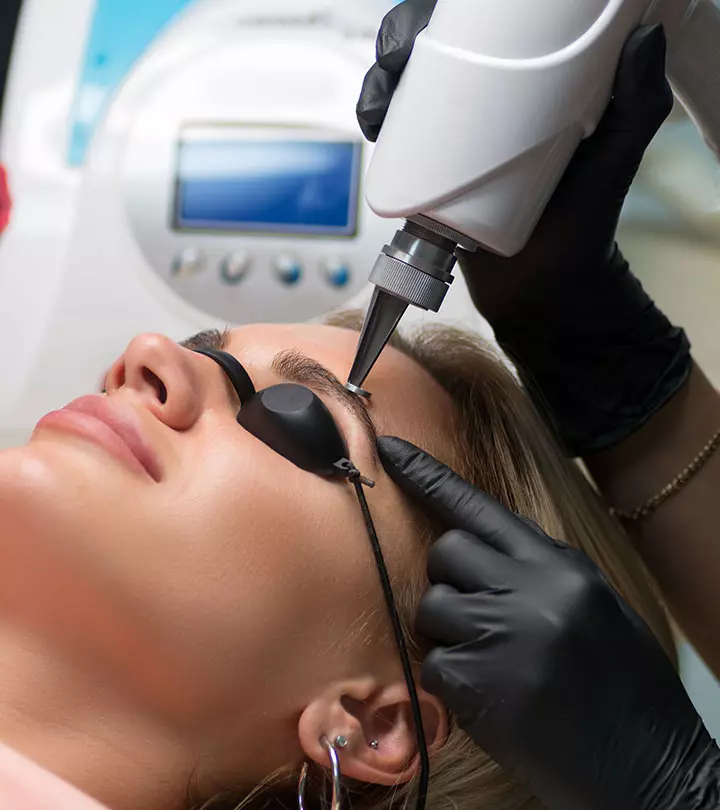
Image: Shutterstock
The eyebrow tattoo removal process is a relevant consideration for those who are tired of their brow tattoos and desire a change or want to revert to their natural eyebrow look. Whether it is due to changes in personal style or dissatisfaction with the initial results, understanding the methods and potential side effects of removing brow tattoos is crucial. Eyebrow tattoos, designed to enhance the natural arch and shape, can be altered or eliminated through various removal techniques. In this article, we will delve into how eyebrow tattoo removal works, shedding light on the processes involved and the potential side effects that individuals should be aware of before deciding to embark on this transformative journey. Explore common tattoo removal methods and considerations surrounding the removal of eyebrow tattoos for those looking to redefine themselves with this permanent makeup removal choice.
In This Article
Methods Used For Eyebrow Tattoo Removal
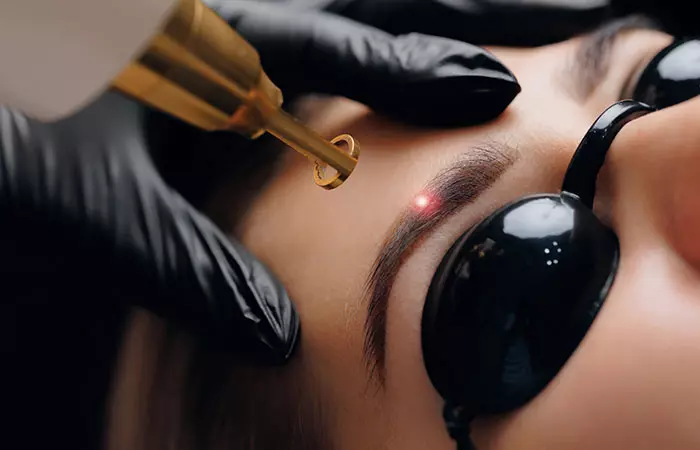
1. Saline Eyebrow Tattoo Removal
involves injecting a saline solution into the tattooed eyebrows. The solution breaks down the unwanted tattoo ink, allowing the body to naturally eliminate them. This saline tattoo treatment method is effective for lightening or removing tattoos gradually. Multiple sessions, typically 6-12 weeks apart, are required for optimal results.
2. Laser Eyebrow Tattoo Removal
is a common method that employs laser energy to break down tattoo pigments. This advanced technology uses pulses of laser light to target tattoo ink particles, shattering them into smaller fragments that the body can absorb. Several removal sessions, spaced 4-8 weeks apart, are necessary. Darker pigments may require more laser tattoo removal sessions, and such continued treatments can cause temporary swelling and redness.
Mary Lito, a YouTuber, shared her experience with the laser removal process of permanent eyebrow makeup. She recorded the process, discussed pain levels, and provided daily updates on the healing process. In the video, she talks about the use of numbing cream for one eyebrow and leaving the other eyebrow be, stating, “This eyebrow [one with numbing cream] was sensitive, I was feeling a little bit pain, but in this eyebrows [one without numbing cream], it is really painful. It’s why, when you doing laser treatment, I recommend you numb all your eyebrows for like 20, 30, or even 40 minutes and then you can proceed with laser removal (i).”
3. Eyebrow Tattoo Removal Cream
Tattoo removal creams contain chemical agents that penetrate the skin and break down the pigments. Daily applications of the cream fade the tattoo over time. However, results vary, and complete removal is not guaranteed. This begs the question, does tattoo removal cream work? Well, the effectiveness of these creams can be inconsistent, and multiple applications are needed, with the process potentially taking several months. It is essential to follow the aftercare instructions carefully and monitor skin reactions.
4. Dermabrasion And Microdermabrasion
Dermabrasion involves mechanically removing the top layers of skin, while microdermabrasion involves tiny abrasive particles that exfoliate the skin. Both methods aim to fade the tattoo by removing the outer layers of the skin where the pigments are located. Dermabrasion is an invasive procedure that may require local anesthesia, and several sessions may be needed for noticeable results.
5. Surgical Excision
Surgical excision involves cutting out the tattooed skin and stitching the remaining skin back together. This method physically removes the tattooed area, but it may leave a scar. Typically reserved for smaller tattoos, the decision to undergo surgical excision depends on factors such as tattoo size and location.
Note: It is essential to consult with a qualified professional before choosing a removal method to determine the most suitable approach, based on the individual’s skin type, tattoo characteristics, and desired outcomes.
Professional tattoo removal by trained practitioners is recommended to reduce the risk of infection, scarring, or complications. While trying to remove permanent eyebrows at home using salt is a popular practice, caution must be exercised. If attempting home removal, proceed with caution, understanding the potential risks. Moreover, results may vary, so consulting with a professional is advisable for the best outcome. Scroll below to learn how to perform home removal of eyebrow tattoos.
Key Takeaways
- Eyebrow tattoo removal treatment methods include saline injection, laser removal, tattoo removal creams, dermabrasion and microdermabrasion, and surgical excision.
- To remove an eyebrow tattoo at home, clean with saline, exfoliate gently, and apply aloe vera or antibiotic ointment regularly for healing.
- To prevent discomfort, take precautions such as conducting a patch test for allergies, maintaining a balanced diet, and staying hydrated.
- Potential side effects of eyebrow tattoo removal may include swelling, redness, bruising, itching, and other related symptoms.
How To Remove Eyebrow Tattoos At Home
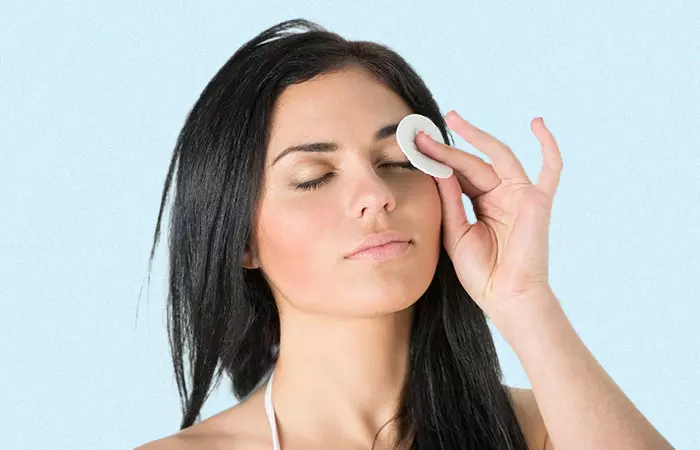
What You Need
- Saline solution (1/4 teaspoon of non-iodized sea salt mixed with 1 cup of lukewarm water)
- Sterile gauze or cotton pads
- Aloe vera gel or antibiotic ointment, as needed
- Gloves
- A mild exfoliating scrub
Method
- Wash your hands thoroughly and wear disposable gloves for cleanliness.
- Ensure the work area is well-lit and clean.
- Gently clean the eyebrow tattoo with the effective saline solution to remove debris and bacteria.
- Pat the area dry using a clean, sterile gauze or cotton pad.
- Apply the mild exfoliating scrub to the tattooed area to induce gradual fading of the tattoo. Be gentle to avoid skin irritation,
- Rinse the scrub with warm water and pat the area dry.
- After exfoliation, apply a thin layer of aloe vera gel or antibiotic ointment to soothe the skin and promote healing.
- Repeat the cleaning, exfoliating, and application of ointment regularly, avoiding excessive scrubbing to prevent skin damage.
 Quick Tip
Quick TipTo avoid the pain and the inconvenience of adverse effects, consider taking the following precautions.
Precautions To Be Taken Before Eyebrow Tattoo Removal
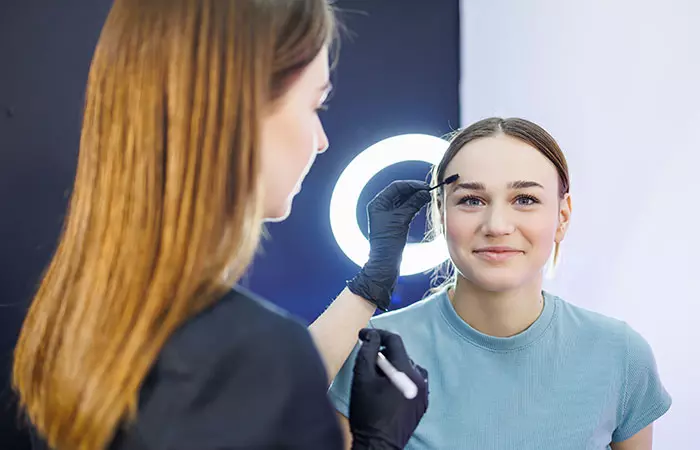
- Consult with a qualified professional for a personalized and thorough assessment.
- Confirm that the tattoo removal method is suitable for your skin type.
- Disclose any chronic medical conditions or medications being used to the practitioner.
- Perform a patch test to check for potential allergic reactions.
- Refrain from using topical skincare products on the treated area.
- Follow pre-treatment instructions provided by the removal specialist.
- Refrain from applying daily makeup and oils on your face at least a week before the treatment.
- Avoid self-tanners for two weeks pre-treatment to prevent potential reactions with the laser.
- Maintain a healthy, balanced diet, and stay adequately hydrated.
- Avoid anti-inflammatory drugs like aspirin, which can increase bleeding during the procedure.
 Quick Tip
Quick TipRemember that eyebrow tattoo removal can lead to various undesirable effects on the skin. Read on to find out what these can be.
Side Effects Of Eyebrow Tattoo Removal

- The process of eyebrow tattoo removal may cause pain and discomfort, and it is advised to opt for numbing creams.
- Swelling, redness, and bruising are common side effects that may occur during the recovery period.
- Itching may be experienced as part of the healing process after eyebrow tattoo removal due to scabbing.
- There is a risk of infection, necessitating proper aftercare to minimize complications.
- Changes in pigmentation may occur, affecting the natural color of the skin in the treated area.
- There are chances of scarring from this removal option, with the extent varying based on individual healing responses.
- Allergic reactions may manifest as a response to the tattoo removal procedure.
- Temporary or permanent skin changes can occur, influencing the texture or appearance of the treated area as well as natural eyebrow hair growth.
Consideration of eyebrow tattoo removal means making a solid decision to change or correct a permanent makeup procedure. Akin to permanent tattoo removal, this process involves understanding the available effective methods and potential side effects associated with altering or eliminating your eyebrow tattoos. Whether through saline injections, laser treatments, creams, or dermabrasion, each removal technique carries its own considerations and levels of efficacy. For those contemplating at-home removal, caution is paramount, needing careful adherence to instructions and awareness of potential risks. Precautions, including professional consultation, patch tests, and lifestyle adjustments, are vital for a smooth removal process. Despite the array of removal options, eyebrow tattoo removal is not without its side effects, from temporary discomfort to changes in pigmentation. Navigating these aspects ensures informed decisions are made for individuals seeking a transformation in their permanent makeup choice.
Frequently Asked Questions
Is eyebrow tattoo removal painful?
Eyebrow tattoo removal can be painful, often involving laser treatments that cause discomfort, but the level of pain varies depending on individual pain tolerance and the removal method used. Topical anesthetics may be applied to mitigate discomfort during the procedure.
Are there long-term effects of eyebrow tattoo removal?
Eyebrow tattoo removal may have potential long-term effects, such as chances of skin surface scarring, pigment changes, or skin texture alterations. The outcome varies depending on the removal method and individual skin reactions.
Can I have partial removal or just lighten my eyebrow tattoo?
Yes, partial removal or lightening of an eyebrow tattoo is possible through techniques like laser tattoo removal treatment or microblading correction, but their success depends on factors like ink color and skin type. Consult with a qualified tattoo removal technician for personalized advice based on your specific situation.
Can eyebrow tattoos be removed completely?
Complete removal of eyebrow tattoos is challenging, but laser treatments can significantly fade or remove unwanted tattoo ink over multiple sessions, considering factors like ink color, skin type, and depth of the tattoo. Consult with a tattoo removal specialist for personalized advice on the feasibility of complete unwanted tattoo removal.
Is eyebrow tattoo laser removal safe?
Eyebrow tattoo laser removal is generally safe when performed by a qualified and experienced cosmetic tattoo artist, following proper safety protocols. However, risks such as potential scarring or changes in pigmentation may arise and vary among individuals. So, it is crucial to consult with a reputable professional for individualized advice.
Illustration: Eyebrow Tattoo Removal: Methods & Side Effects
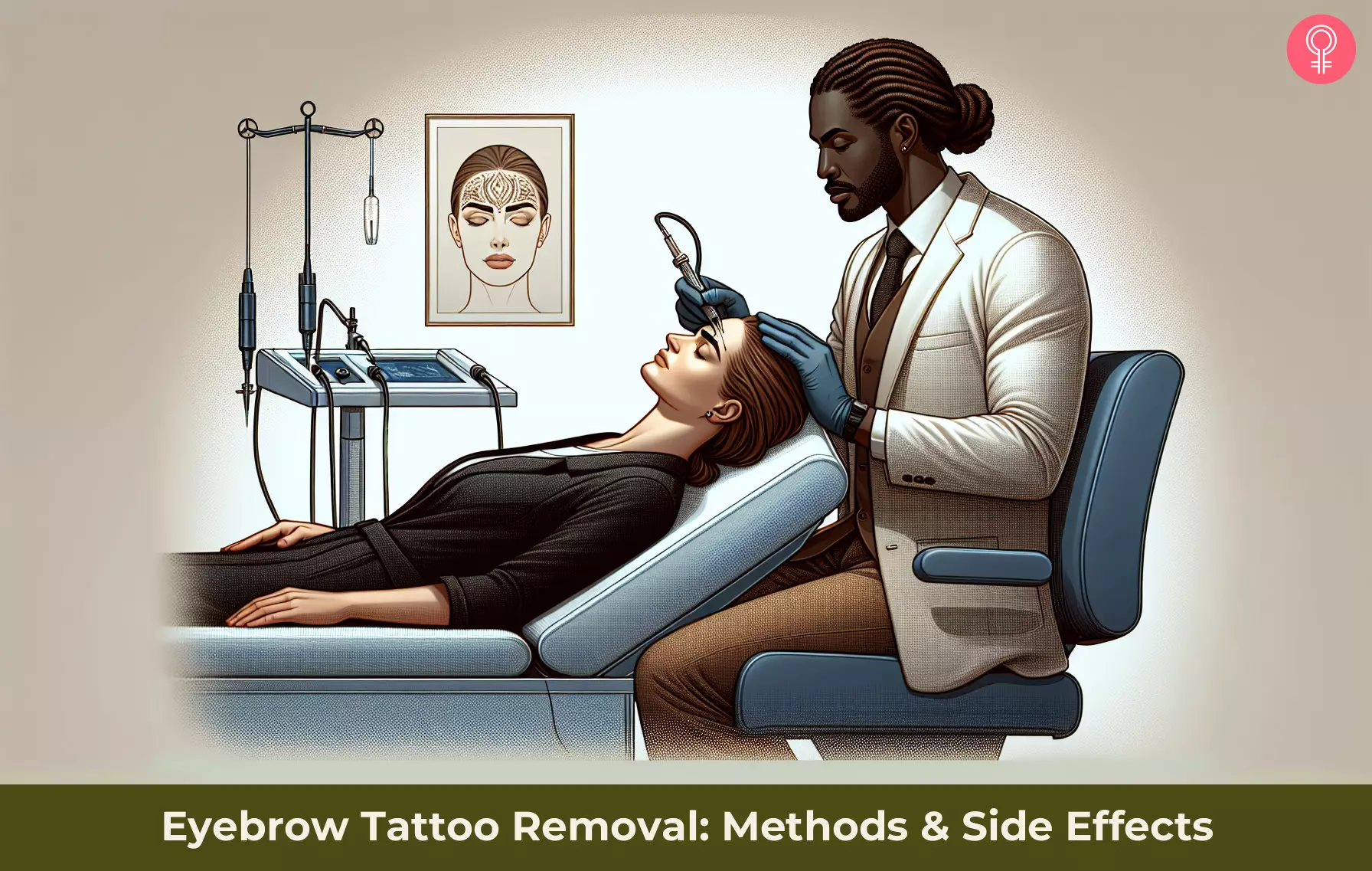
Image: Dall·E/StyleCraze Design Team
Say goodbye to unwanted eyebrow tattoos with this guide to saline solution removal. Watch this video to discover the gentle and effective process of eyebrow tattoo removal. Get ready to bid farewell to old ink and embrace a fresh start!
Personal Experience: Source
StyleCraze's articles are interwoven with authentic personal narratives that provide depth and resonance to our content. Below are the sources of the personal accounts referenced in this article.
(i). Laser Tattoo Removal. Eyebrows (My experience, full treatment, healing process)https://www.youtube.com/watch?v=7DQLs-NmNO0
Read full bio of Ashutosh Bairagi
Read full bio of Pahul Nanra
Read full bio of Madhumati Chowdhury
Read full bio of Manjari Uppal






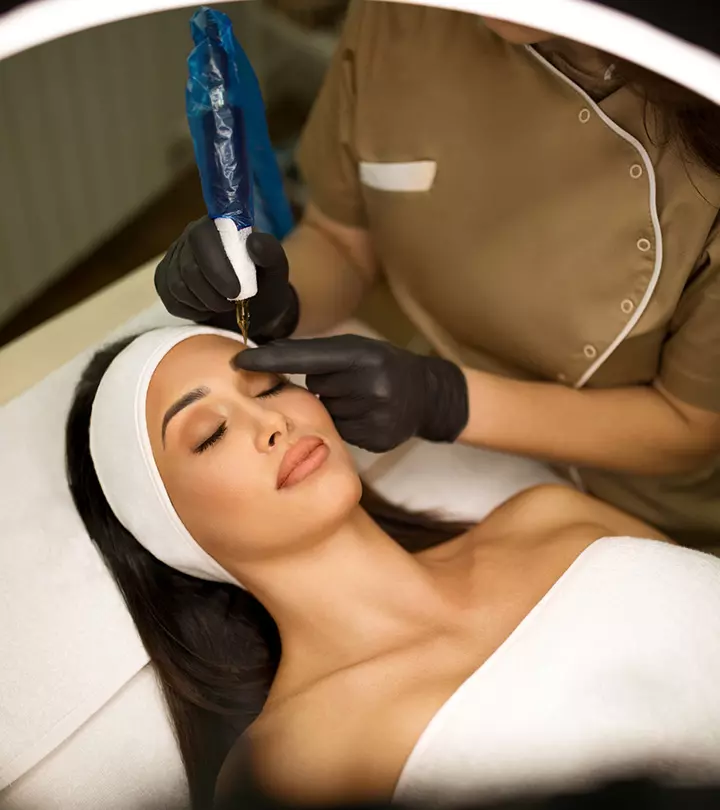
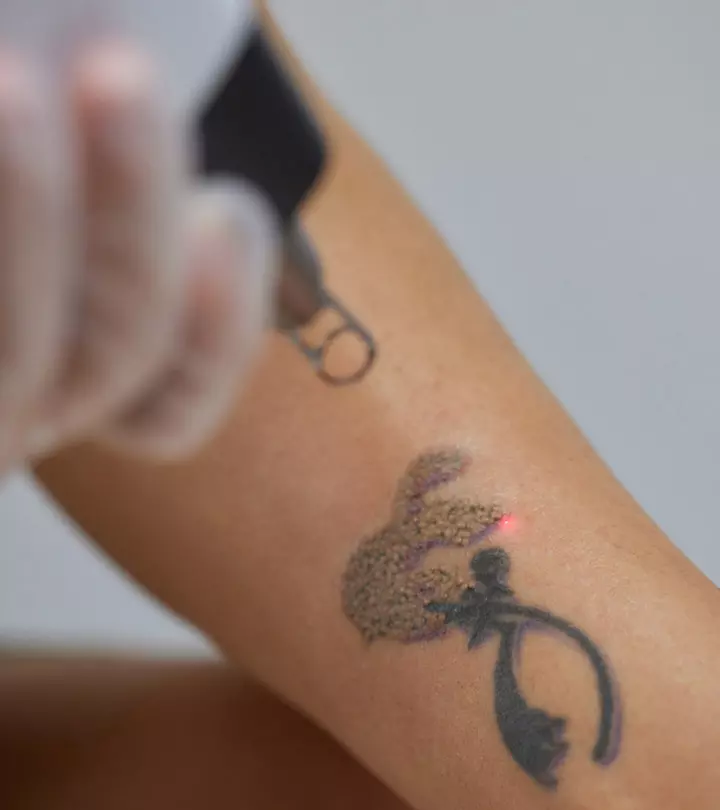


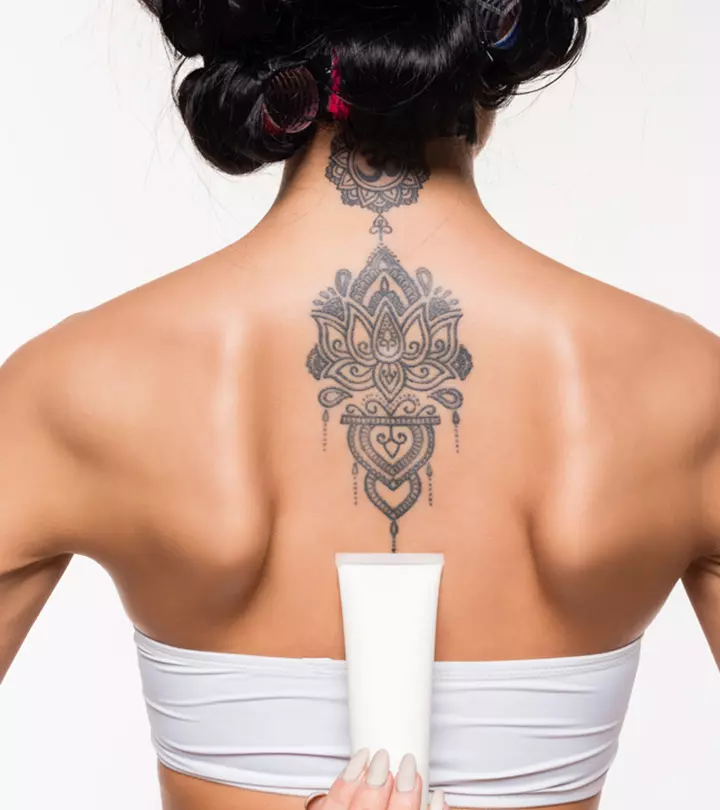








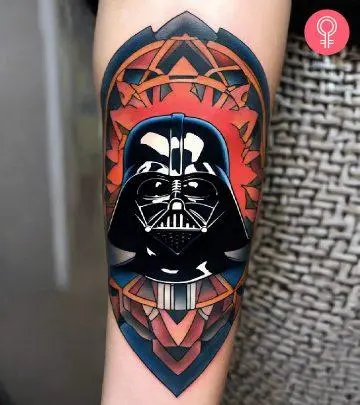






Community Experiences
Join the conversation and become a part of our empowering community! Share your stories, experiences, and insights to connect with other beauty, lifestyle, and health enthusiasts.